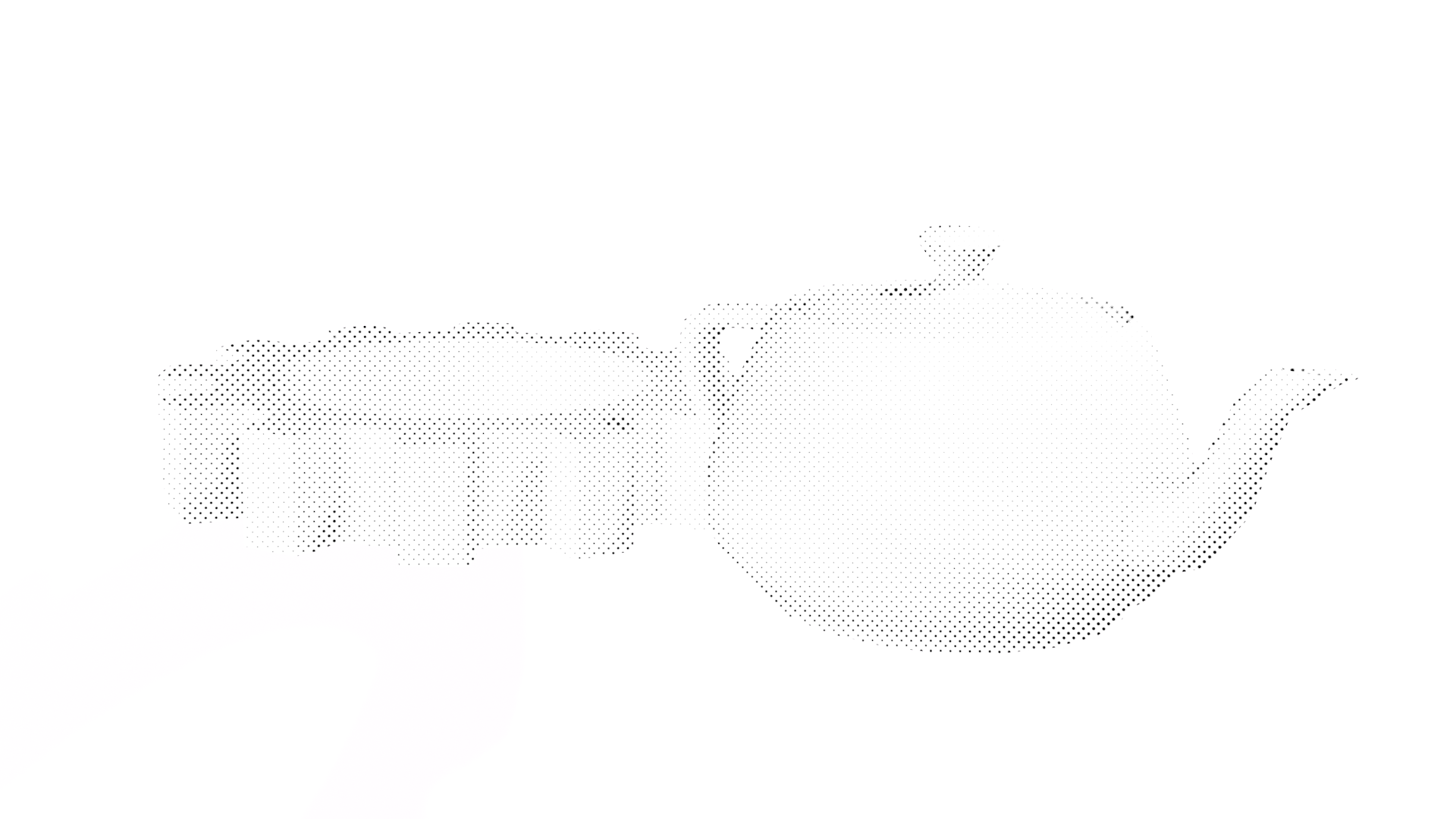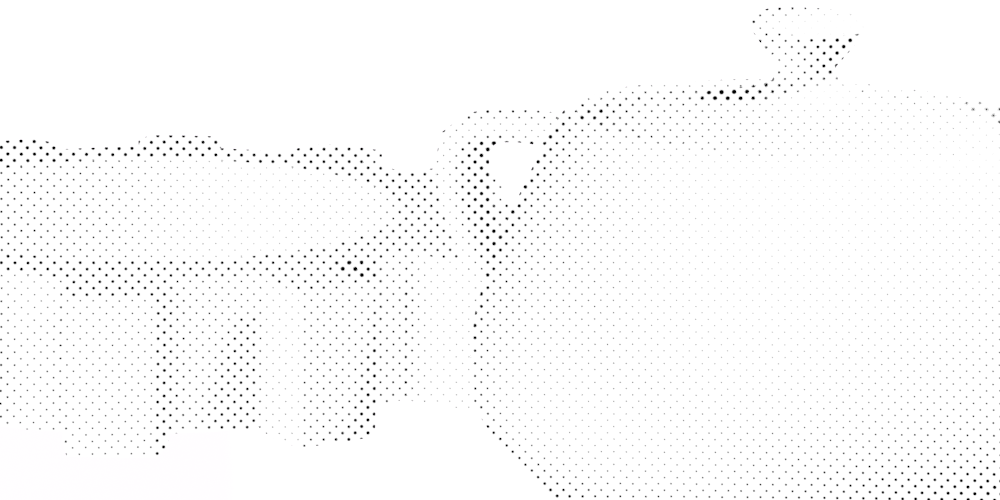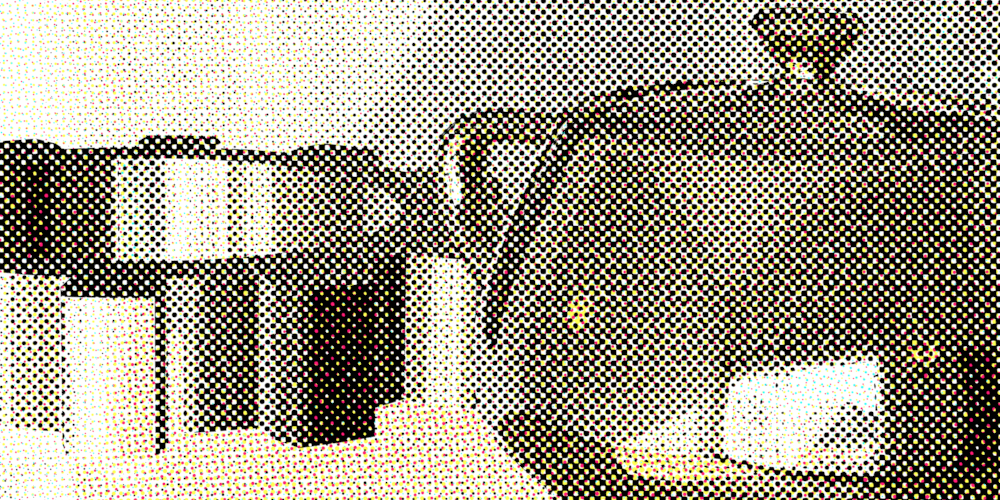This project was originally conceived as a typical Japanese classroom like one that would be used in a highschool. The chairs and desks were handmodelled in Blender, and then instanced to create the 30ish other sets like would be present in a real classroom.
Miscellaneous props were scattered in the background, like a tarp that was shaped through cloth simulation. The tarp is visible in the background of the third image.
The floor tiling texture was procedurally generated through shading nodes, alternating rotation and color to make a convincing hardwood floor facsimile.
Lights and AC units fill out the ceiling, and a generic city HDRI is used to light the scene through the windows.
One of the final renders, seen in image 3, has been color graded in post to a blue hue.
Project developed in Blender.
Classroom environment development



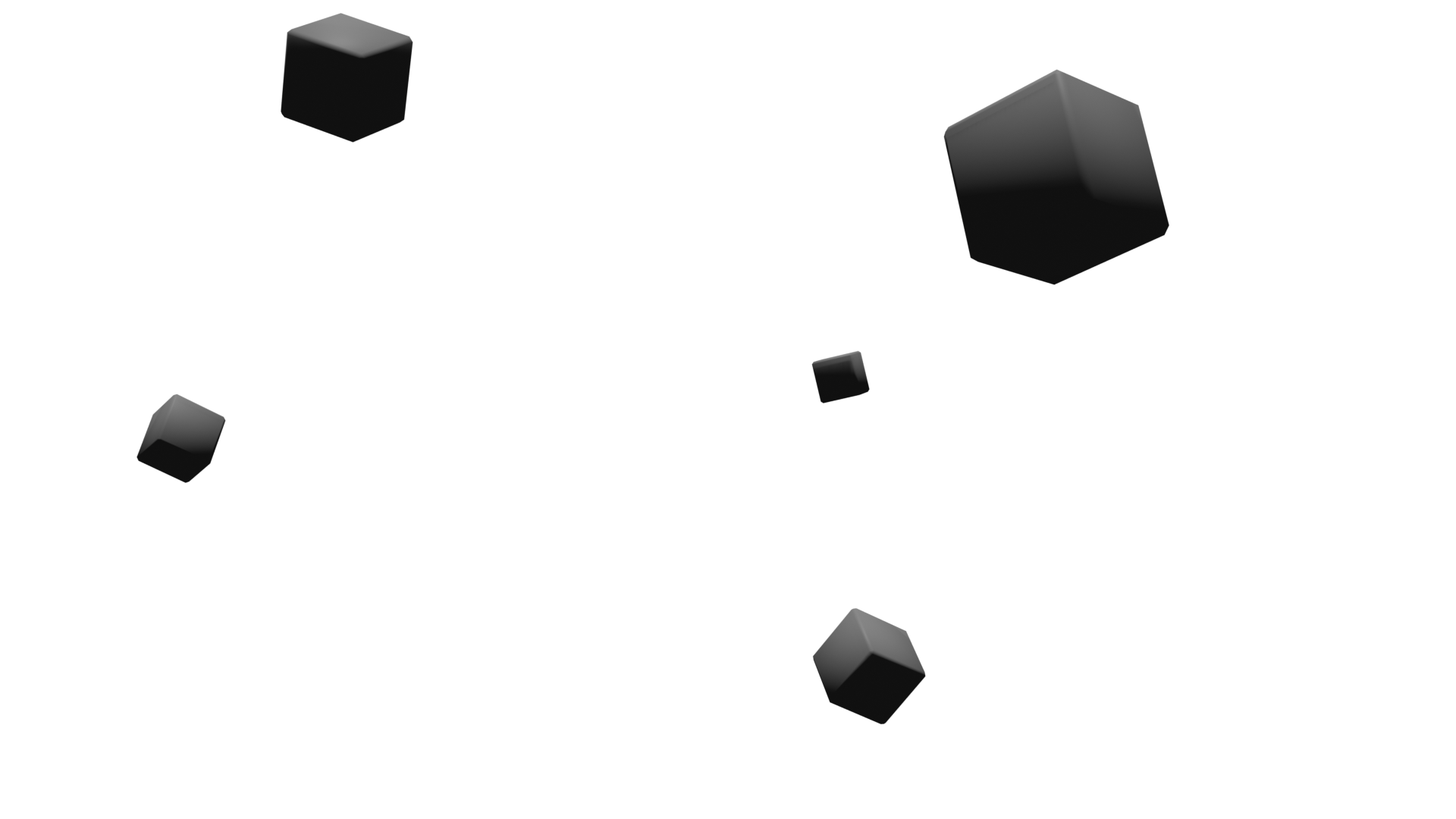
This project started out as a test for rendering trees in 3D as if they were painted in 2D, inspired by works from Ghibli Studios movies. The tree foliage is a collection of instanced particles that were converted into a mesh, textured by posterizing a diffuse shader, and using a “sun” light source to uni-directionally light them. The trunks are edges of a collection of vertices, with a “skin” modifier that creates a mesh surrounding the edges, also textured using the same diffuse shader to posterization method.
Following the creation of the trees, convincing NPR grass had to be developed to give the look of a meadow environment. This was accomplished through the use of a hair particle system for the blades, and a dappled bright green shader on the emitter plane and blades of grass. Vertex groups were used to affect the grass length and density.
In addition, white flowers were distributed through the meadow using a similar method to the creation of the grass. A particle system was used to instance image-planes of a simple flower, and vertex groups were used to manage the density throughout the meadow-plane.
To create a sense of a full scene, decorative rocks and bones were strewn throughout the meadow, the placement of which switched around multiple times during development as can be seen in the images shown. They were textured using shading nodes, using voronoi noise and distorted waves in order to create the illusion of moss, and diffuse shaders converted to RGB then posterized to texture the surface.
Miscellaneous details were also added, like a clothesline, ladder, red bucket, hanging clothes, and a hut that was textured through stretching UV’s around an image of a rustic house.
Project developed in Blender.
Non Photo-Realistic Environment


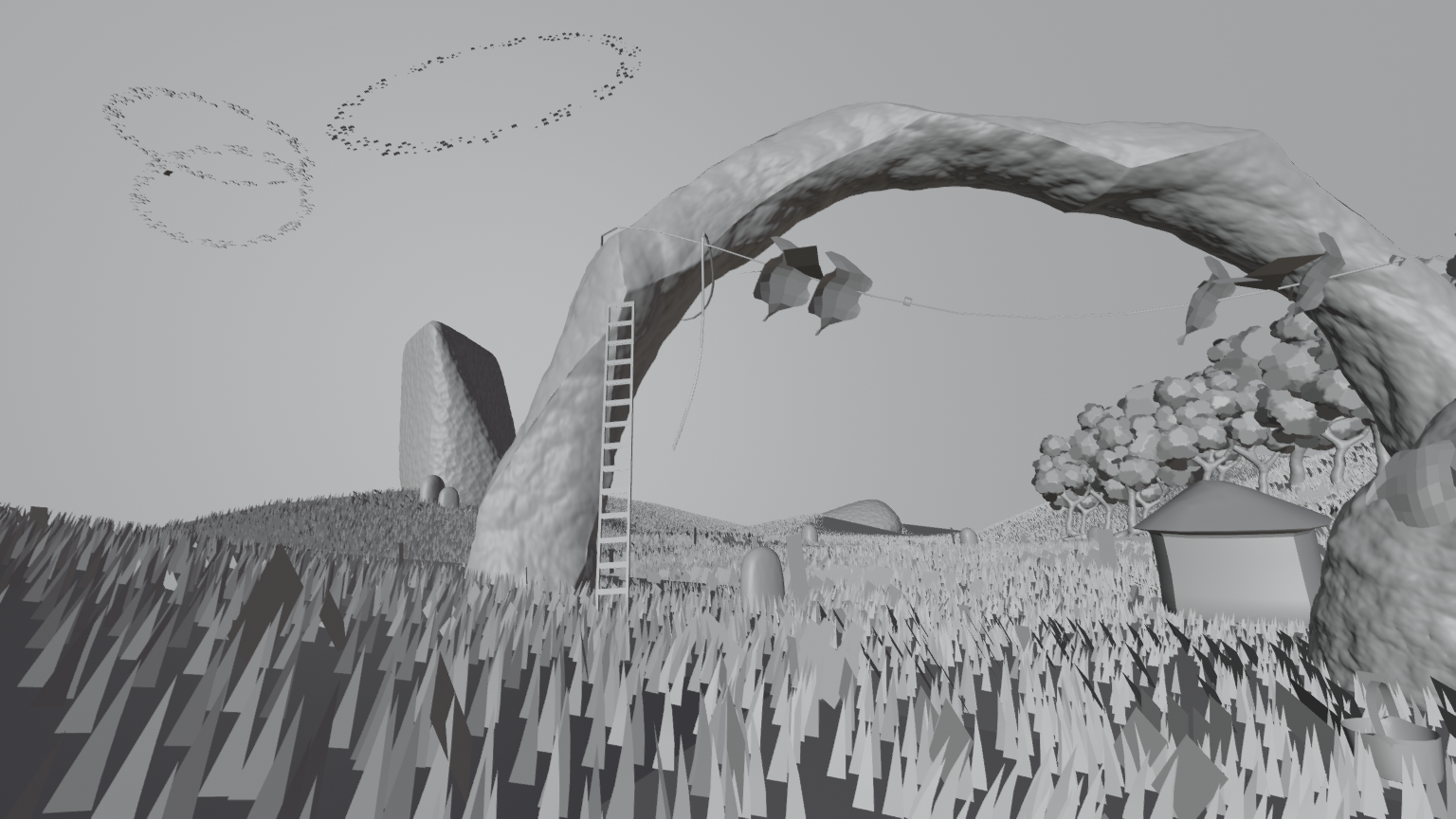


Originally, this project was based off a prompt from an online community challenge, titled ‘Layers’. My interpretation was to make a shader for stratified rock, built up from procedural noise and waves. Displacement was used to make the rock jut out at certain positions, to give the look of different weathering rates in the rock layers.
Once that was complete, I demoed it on material balls, seen in image 1 and 2. In a revisit though, I realized that the shader could be adapted to texture larger structures. So I reworked it for global coordinates, changed scaling and color, and adjusted the strength of the displacement.
A bare environment model is seen in image 3, and in image 4 the shader without displacement is shown. The final render with displacement and a human figure for scale is seen in image 5. Nearly all the detail in the final render is a result of the shader itself.
Project developed in Blender.
All-in-one Canyon Shader





Here, I made a foray into shaders that emulated effects normally made in post processing. Here I emulated an engraving style, not unlike that which would be found in dollar bills (which is also why I selected a green color for the shader). Multiple different wave patterns are rotated at different angles, with the width of lines in a region being wider when the value at that point is darker.
The shader works for any object that can be textured, and the algorithm, originally made in blender, can be easily translated into other programs. The final image for this project is a close up, showing the detail that the shader can produce.
Project developed in Blender.
Engraving Shader





In a similar vein to the engraving shader, this CMYK halftone shader is based off the CMYK printing process that is typically processed in post. In CMYK printing, different quantities of cyan, magenta, yellow, and black ink are distributed around a point, depending on the amounts needed in order to additively synthesize a different color. This can be done at different point densities, or dpu’s, with higher dpu converging on a fully colored print.
The first 2 images are a black and white version where only the black ink is processed, illustrating the points at which CMYK are evaluated.
The fourth image is a closeup of the 350 dpu version, showing how the illusion of different colors is created through the addition of the 4 inks.
Like the engraving shader, this shader can be applied to any scene, and is easily translated to other programs.
Project developed in Blender.
CMYK Halftone Shader
